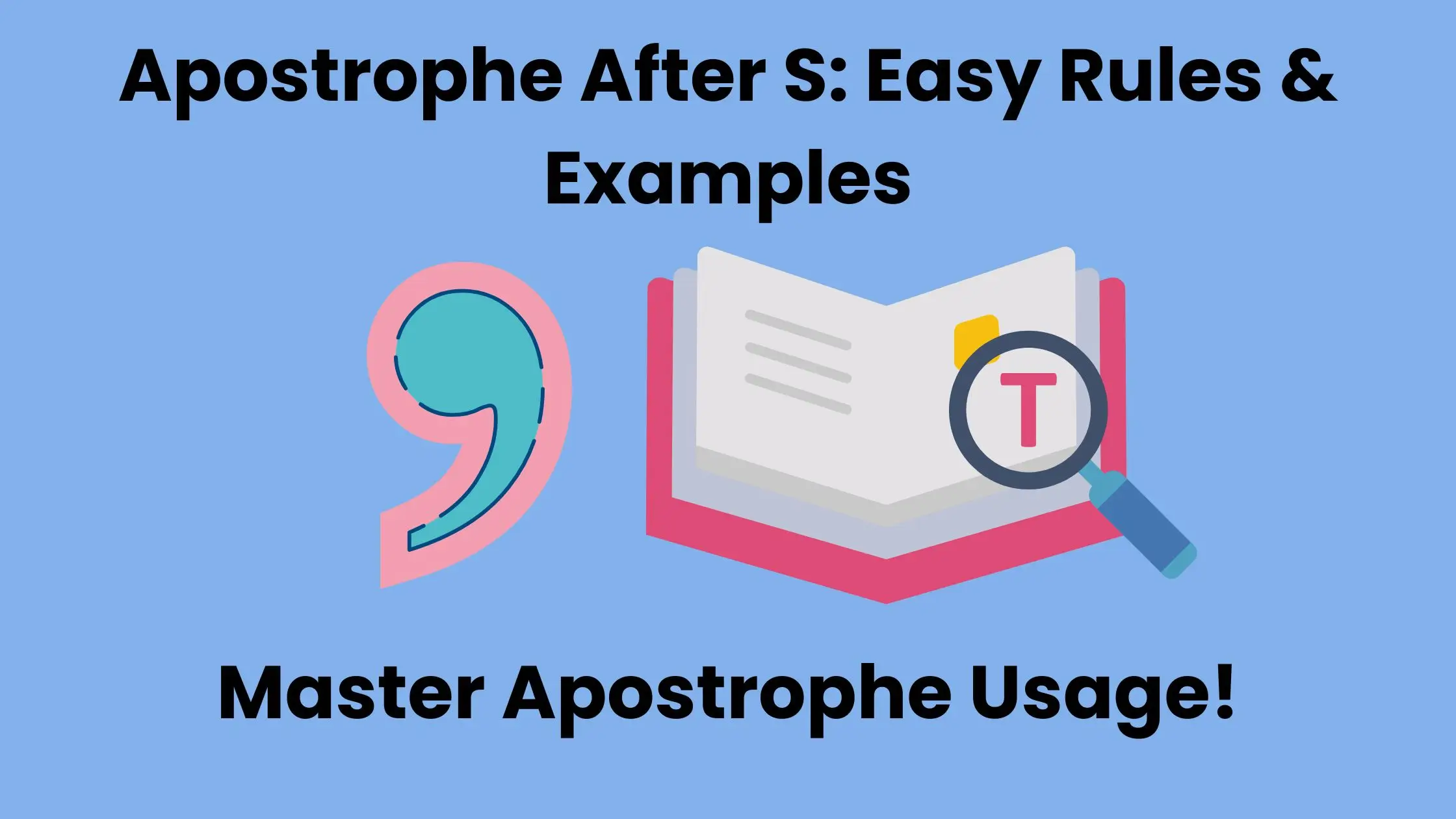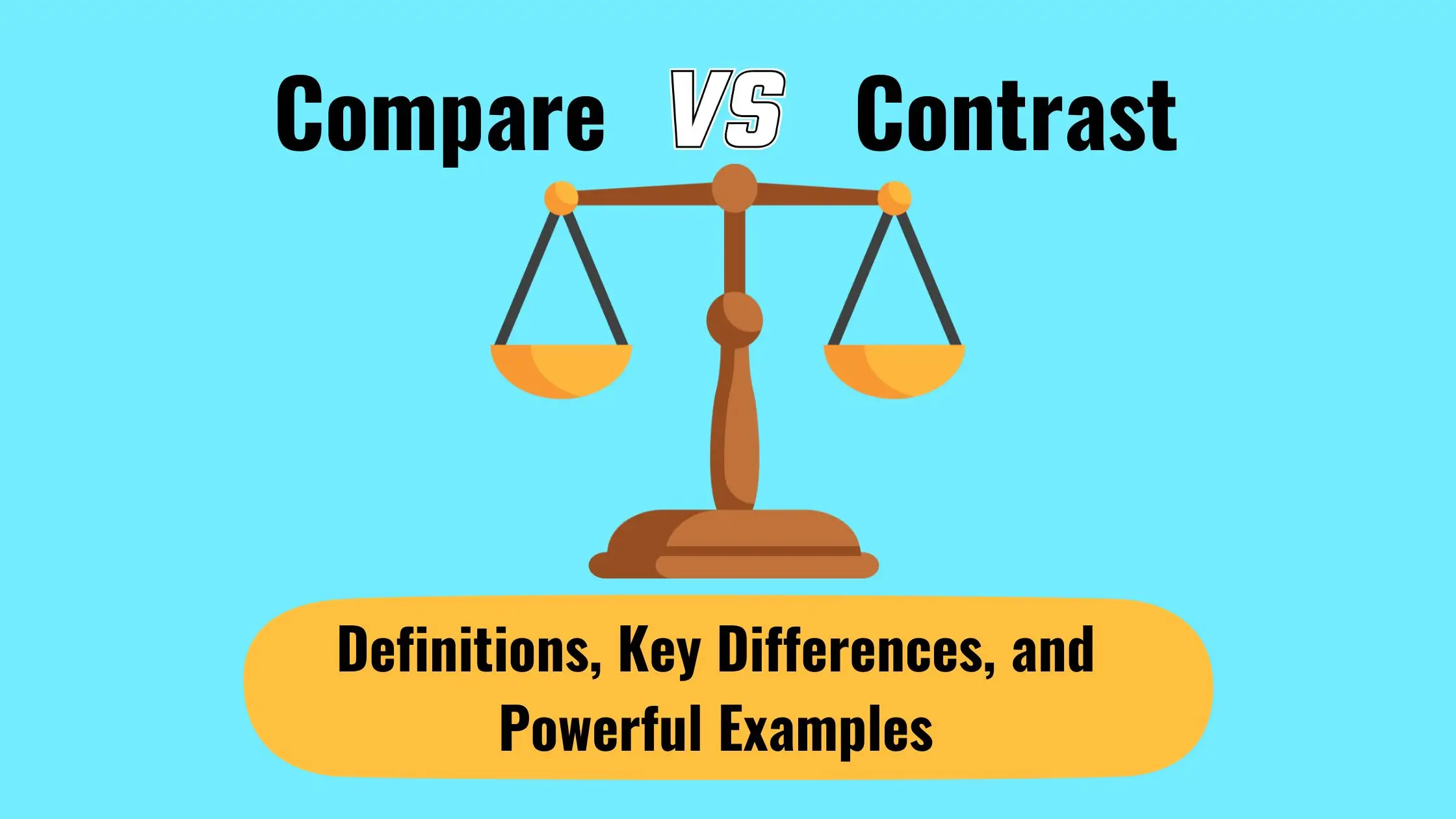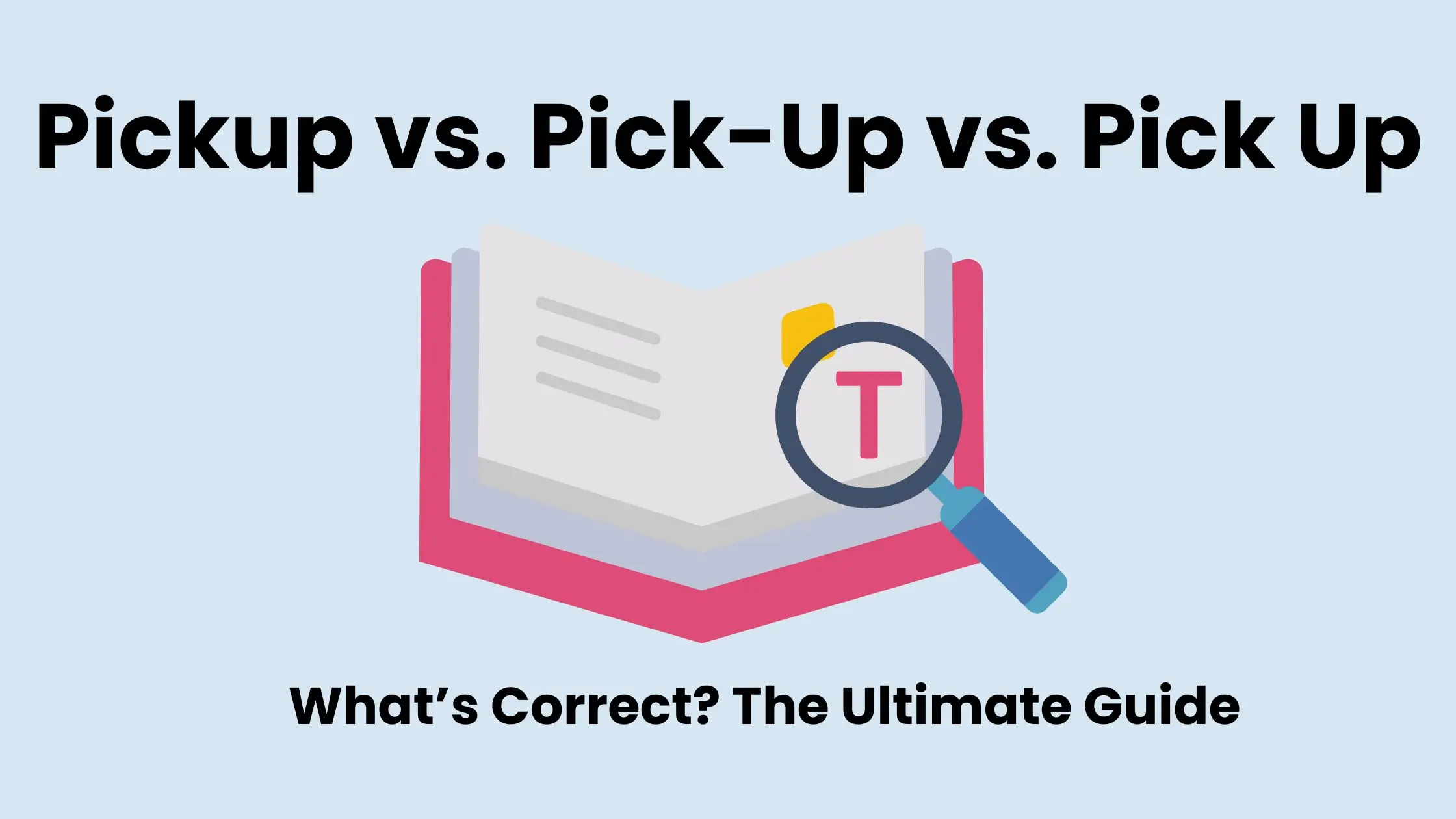Apostrophes are small marks, but they cause big confusion. Many people struggle with where to place them, especially after the letter “S.” Should you write “James’ book” or “James’s book”? What about “students’ assignments”? These tiny details can make a big difference in grammar.
In this guide, we will break down the rules of using an apostrophe after “S” in simple steps. You will learn when to add just an apostrophe and when to add ‘S. We will also cover exceptions, common mistakes, and differences in grammar styles.
Whether you are a student, a writer, or someone who just wants to improve their English, this article will help you. By the end, you will know exactly how to use apostrophes correctly in any sentence. Let’s get started!
What Is an Apostrophe and How Does It Work?
Definition and Purpose of Apostrophes
An apostrophe (‘) is a punctuation mark that has two main jobs. First, it shows possession—when something belongs to someone or something. For example, “Sarah’s book” means the book belongs to Sarah. Second, it replaces missing letters in contractions, like “don’t” for “do not” or “it’s” for “it is.”
Apostrophes help make sentences clear. Without them, words can have different meanings. Compare “its color is bright” (possessive) and “it’s a bright color” (contraction). The apostrophe tells us whether “it’s” means “it is” or if “its” refers to something’s possession.
General Rules for Apostrophe Usage
Apostrophes are simple when you follow the rules. Here’s what you need to remember:
- Show Possession
- Add ‘S to singular nouns: The dog’s bone (The bone of the dog).
- Add ‘ (without S) to plural nouns ending in S: The teachers’ lounge (The lounge of the teachers).
- For names ending in S, both James’ book and James’s book are correct, depending on style.
- Replace Missing Letters in Contractions
- “Can’t” = “cannot”
- “I’m” = “I am”
- “They’re” = “They are”
- Never Use an Apostrophe for Plurals
- ❌ Apple’s are tasty. (Incorrect)
- ✅ Apples are tasty. (Correct)
Common Misconceptions About Apostrophes
Many people misuse apostrophes. Here are the most common mistakes:
- Using an Apostrophe for Regular Plural Nouns
- ❌ The car’s are parked outside.
- ✅ The cars are parked outside.
- Apostrophes do not make words plural.
- Confusing Possessive “Its” with the Contraction “It’s”
- “Its” means belonging to something: “The cat licked its paw.”
- “It’s” means “it is”: “It’s raining outside.”
- A simple test: Replace “it’s” with “it is.” If the sentence still makes sense, use an apostrophe.
- Adding an Apostrophe to Plural Last Names
- ❌ The Smith’s invited us to dinner. (Incorrect)
- ✅ The Smiths invited us to dinner. (Correct)
- But for possession: “The Smiths’ house is big.” (The house belongs to the Smiths.)
Understanding these basics will help you avoid common grammar mistakes. Now, let’s explore when to use an apostrophe after “S.”
When to Use an Apostrophe After “S”
Apostrophes after S often confuse writers. Some words get only an apostrophe, while others need ‘S. The rules change depending on whether a noun is singular or plural. Let’s break it down step by step.
1. Possessive Form of Plural Nouns
When a noun is plural and already ends in S, just add an apostrophe (‘) at the end. This shows possession.
- “The students’ assignments” → (Assignments belonging to multiple students.)
- “The teachers’ lounge” → (The lounge for many teachers.)
- “The dogs’ collars” → (Collars of multiple dogs.)
But if the plural form does not end in S, add ‘S instead.
- “The children’s toys” → (Toys belonging to children.)
- “The women’s restroom” → (Restroom for women.)
2. Singular Nouns Ending in “S”
Some singular nouns end in S. Should you write ‘S or just ‘? Both are correct, but different style guides give different rules.
- Chicago Manual of Style: Add ‘S.
- “James’s book”
- “The boss’s office”
- “Chris’s phone”
- AP Style (Used in Journalism): Add only ‘ for easier reading.
- “James’ book”
- “The boss’ office”
- “Chris’ phone”
The important part? Stay consistent in your writing.
3. Proper Names Ending in “S”
Names like Jones, Charles, or James can follow either rule.
- “Charles’s car” (Chicago Style)
- “Charles’ car” (AP Style)
If the name is plural, only add an apostrophe:
- “The Williamses’ house” → (House of the Williams family.)
- “The Davises’ dog” → (Dog of the Davis family.)
4. Joint vs. Separate Possession
What if two people share ownership?
- “Sam and Jake’s house” → (They own one house together.)
- “Sam’s and Jake’s houses” → (Each owns a separate house.)
The apostrophe placement changes the meaning.
5. Special Cases: Plural Form of Letters, Numbers, and Symbols
Apostrophes sometimes prevent confusion, especially with single letters.
- “Mind your P’s and Q’s.”
- “Dot your i’s and cross your t’s.”
For numbers and abbreviations, modern style guides do not use apostrophes.
- “The 1990s were great.” (Not “1990’s”)
- “He has two PhDs.” (Not “PhD’s”)
These rules will help you decide when to place an apostrophe after S. Next, we will look at cases where you shouldn’t use an apostrophe.
When NOT to Use an Apostrophe After “S”
Many people misuse apostrophes by adding them where they don’t belong. Apostrophes do not make words plural, and they are not used with certain pronouns or verbs.
1. Plural Nouns Without Possession
Apostrophes are not used to make words plural. A simple S or ES is enough.
- Incorrect: “The cat’s are sleeping.”
- Correct: “The cats are sleeping.”
- Incorrect: “I bought three apple’s.”
- Correct: “I bought three apples.”
The only time an apostrophe is needed with plurals is when showing possession (e.g., “The cats’ toys.”). If it’s just more than one thing, do not add an apostrophe.
2. Verbs and Incorrect Contractions
Apostrophes should never appear in regular verbs. Verbs do not need apostrophes to show action.
- Incorrect: “She love’s reading.”
- Correct: “She loves reading.”
- Incorrect: “He write’s well.”
- Correct: “He writes well.”
People also make mistakes with contractions that don’t exist.
- Incorrect: “Their going to the park.”
- Correct: “They’re going to the park.”
- Incorrect: “I should of called you.”
- Correct: “I should’ve called you.”
3. Pronouns That Already Indicate Possession
Possessive pronouns already show ownership. They don’t need apostrophes.
- Incorrect: “The dog wagged it’s tail.”
- Correct: “The dog wagged its tail.”
- Incorrect: “That book is her’s.”
- Correct: “That book is hers.”
- Incorrect: “The house is their’s.”
- Correct: “The house is theirs.”
A good rule: If the word his or hers makes sense in the sentence, you do not need an apostrophe.
Apostrophe After “S” in Different Writing Styles
Apostrophe rules are not always the same. Different writing styles have different preferences, especially when dealing with singular nouns that end in S. The two most common guides—The Chicago Manual of Style (CMS) and The Associated Press (AP) Stylebook—disagree on certain apostrophe rules. British and American English also have their own variations. Let’s look at these differences.
1. Chicago Manual of Style vs. AP Style
Both CMS and AP Style agree on general apostrophe rules. However, they handle singular nouns ending in S differently.
- Chicago Manual of Style (CMS):
- Adds ‘S to singular nouns ending in S.
- Examples:
- “James’s book”
- “The boss’s office”
- “The witness’s statement”
- Associated Press (AP) Style:
- Adds only an apostrophe (no extra S) to singular proper nouns ending in S.
- Examples:
- “James’ book”
- “The boss’ office”
- “The witness’ statement”
Both styles agree that plural nouns ending in S should only take an apostrophe.
- Correct for both CMS and AP:
- “The teachers’ meeting”
- “The students’ books”
2. British English vs. American English
Apostrophe usage is mostly the same in both British and American English. However, British English tends to drop the extra S in singular nouns ending in S.
- American English (Follows CMS or AP Style):
- “Charles’s car” (CMS)
- “Charles’ car” (AP Style)
- British English:
- “Charles’ car” (Even in formal writing, no extra S)
For plural possessives, both British and American English only add an apostrophe after S.
- “The students’ papers” (Both styles)
- “The players’ jerseys” (Both styles)
3. When to Follow Each Style
- Use CMS if you are writing books, academic papers, or formal documents.
- Use AP Style if you are writing news articles, blogs, or media content.
- Follow British English if writing for a UK audience.
- Stick to one style in a document to maintain consistency.
Knowing these differences helps you write correctly in any situation. Up next, we will cover common apostrophe mistakes and how to avoid them.
Apostrophe Misuse and How to Avoid It
Apostrophes are small, but they cause big problems. Many people place them where they don’t belong or forget them when needed.
1. Common Mistakes and How to Spot Them
Mistakes with apostrophes usually happen in three areas: plurals, contractions, and possession.
- Adding an apostrophe to plural nouns:
- ❌ “The cat’s are playing outside.”
- ✅ “The cats are playing outside.” (No apostrophe for simple plurals.)
- Confusing contractions with possessives:
- ❌ “The dog wagged it’s tail.” (Wrong)
- ✅ “The dog wagged its tail.” (Correct – no apostrophe in “its” for possession.)
- Quick test: Replace “it’s” with “it is.” If it makes sense, use the apostrophe. If not, leave it out.
- Incorrectly using an apostrophe with last names:
- ❌ “The Smith’s invited us over.”
- ✅ “The Smiths invited us over.” (No apostrophe for a family name.)
- ✅ “The Smiths’ house is big.” (Apostrophe only for possession.)
2. Tools to Check Apostrophe Usage
Grammar mistakes are easy to make, but they’re also easy to fix. Use these tools to check your writing:
- Grammarly: Detects apostrophe errors in contractions and possessives.
- Hemingway Editor: Highlights complex sentences that may cause confusion.
- Microsoft Word Grammar Checker: Built-in feature for basic punctuation mistakes.
If in doubt, read your sentence out loud. Apostrophe errors often sound wrong when spoken.
3. Easy Tips to Remember Apostrophe Rules
- Apostrophes do not make words plural. They show possession or replace missing letters.
- Check contractions carefully. If the apostrophe replaces letters (like in don’t or you’re), it’s correct.
- Singular names ending in S follow different styles. Choose James’s (Chicago style) or James’ (AP style), but stay consistent.
- If possession is unclear, rewrite the sentence. Example: Instead of “The bosses’ decisions” (which can be confusing), try “The decisions of the bosses.”
Mastering apostrophe rules takes practice, but following these tips will help. Next, we’ll see how apostrophes are used in different types of writing.
Apostrophe After “S” in Real-World Writing
Apostrophe rules are not just for grammar books. They appear in everyday writing—formal documents, casual emails, business communication, and social media posts. Understanding when and how to use them correctly can make your writing clearer and more professional.
1. Formal Writing (Essays, Academic Papers, Business Communication)
Formal writing requires precision. Incorrect apostrophe usage can make a document look unprofessional. Here are some key points:
- Stick to one style guide. Academic writing often follows the Chicago Manual of Style (CMS), while journalism and business writing prefer AP Style.
- Use apostrophes correctly in possessives. Example: “The company’s policy” (if referring to one company) vs. “The companies’ policies” (if referring to multiple companies).
- Avoid contractions in academic writing. Instead of “don’t”, write “do not.” Instead of “it’s”, use “it is.”
Examples:
- “The manager’s report was detailed.” (One manager owns the report.)
- “The managers’ reports were submitted on time.” (Reports belong to multiple managers.)
2. Casual and Online Writing (Blogs, Social Media, Emails)
Casual writing is more flexible. People often use contractions and informal language. However, apostrophe mistakes can still cause confusion.
- Use contractions correctly. Example: “I can’t believe it’s Friday!” (Not “its Friday.”)
- Avoid apostrophes in plurals. Example: “I bought two pizzas.” (Not “pizza’s.”)
- Be careful with names ending in S. Example: “James’s post went viral.” (or “James’ post,” depending on style.)
Examples:
- “It’s been a long day, but I’m excited for tomorrow!” (Correct contraction usage.)
- “The dog lost its toy, so I got it a new one.” (No apostrophe in “its.”)
3. How Apostrophe Errors Affect SEO & Readability
Search engines like Google analyze correct spelling and punctuation. Apostrophe mistakes can impact readability and even search rankings.
- Incorrect apostrophes confuse readers. If someone searches for “mens shoes”, but your site says “men’s shoes”, it might not match the query correctly.
- Apostrophe errors can look unprofessional. Poor grammar can reduce trust in websites, especially for businesses.
- Keyword searches don’t always include apostrophes. Some people type “kids toys” instead of “kids’ toys.” Consider SEO best practices when choosing how to write product titles and descriptions.
By applying apostrophe rules correctly, you improve both clarity and credibility in all types of writing. Up next, we’ll test your knowledge with a short quiz and practice exercises.
Apostrophe After “S” Quiz and Practice Exercises
Understanding the rules is one thing. Applying them is another. Practice helps you remember the correct usage of apostrophes, especially after S. Below are some exercises to test your knowledge.
1. Multiple-Choice Questions
Choose the correct sentence in each pair:
- A. The teachers lounge is next to the library.
B. The teachers’ lounge is next to the library. - A. I found James’s notebook on the desk.
B. I found James’ notebook on the desk. - A. The dog lost it’s collar.
B. The dog lost its collar. - A. The bosses’ meeting was rescheduled.
B. The boss’s meeting was rescheduled. - A. She borrowed her friends’ book.
B. She borrowed her friend’s book.
(Answers: 1-B, 2-A/B depending on style, 3-B, 4-A/B depending on meaning, 5-B)
2. Sentence Correction Exercises
Fix the apostrophe mistakes in these sentences:
- The cat’s are playing in the garden.
- We are visiting the Smith’s for dinner.
- I love my parents’s house.
- The two companies’s profits increased this year.
- Its a beautiful day outside!
(Answers: 1 → Cats, 2 → Smiths’, 3 → Parents’, 4 → Companies’, 5 → It’s.)
3. Fill in the Blanks
Complete the sentences with the correct apostrophe placement:
- The _____ (students) books were left in the classroom.
- I found the _____ (boss) report on my desk.
- That is my _____ (child) favorite toy.
- We will visit the _____ (Williams) house tomorrow.
- The _____ (dog) collar was missing.
(Answers: 1 → students’, 2 → boss’s, 3 → child’s, 4 → Williamses’, 5 → dog’s.)
Conclusion
Apostrophes are small but important. They help show possession and replace missing letters in contractions. But when they come after S, the rules can be tricky.
We covered when to add an apostrophe and when to leave it out. For plural nouns that end in S, just add an apostrophe (the teachers’ books). For singular nouns that end in S, you have a choice: James’s book (Chicago Style) or James’ book (AP Style). We also discussed common mistakes, different writing styles, and SEO considerations.
The key to mastering apostrophes? Practice and consistency. Stick to one rule set, proofread your work, and use grammar tools when needed. When in doubt, rewrite the sentence to avoid confusion.
Now, you understand how to use an apostrophe after S in any situation. Keep practicing, and soon, correct apostrophe usage will feel natural!
Sources
- Merriam-Webster – Apostrophe Definition & Usage (Merriam-Webster)
- Cambridge Dictionary – Apostrophe Rules for Possession (Cambridge Dictionary)
- Chicago Manual of Style – Possessives and Apostrophe Usage (Chicago Manual of Style)
- AP Stylebook – Apostrophe Guidelines for Proper Nouns (AP Stylebook)



